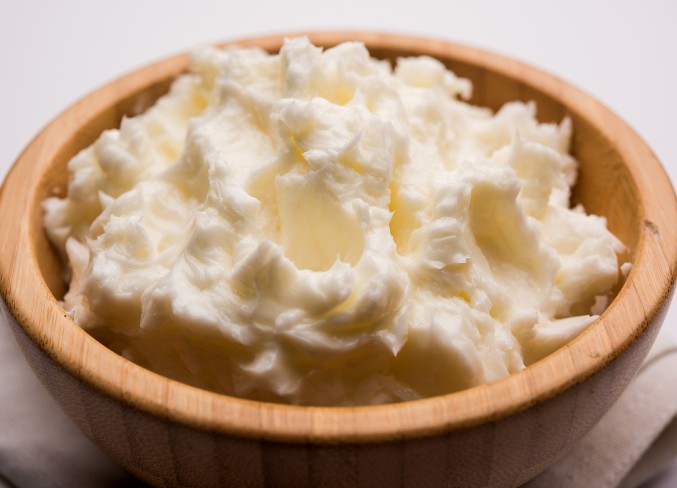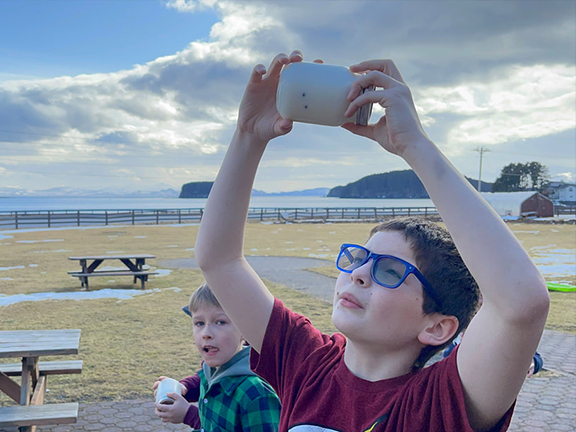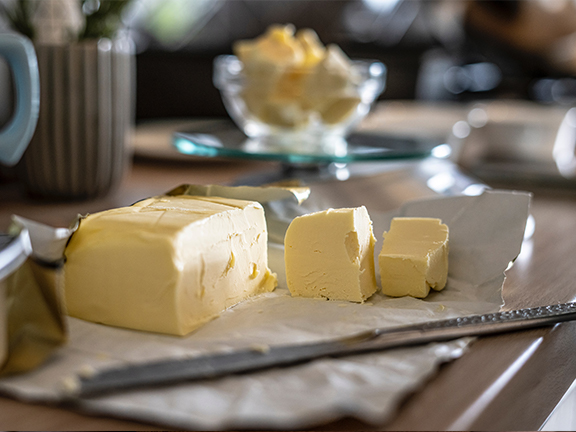Make Your Own Butter
About the Activity
Who doesn’t love butter? In this activity, you will learn about where butter comes from and how to make your own butter!

Materials
These simple supplies should get you started. You may need to order or buy marbles from a toy store.
Jar with lid
Marbles (optional)
Heavy whipping cream
Salt (optional)
Activity Steps
Before we start, here’s what you should know: Butter is made from the cream that exists naturally in milk. When milk settles, the cream will naturally float to the top, where you can skim it off.
Let’s get started.
First, wash the jar, lid, and marble with hot water and soap. Always be sure your hands and utensils are clean during food preparation! That’s especially important when what you are preparing, like this butter, is not going to be cooked.

 Did you know?
Did you know?Butter is high in vitamin A, D, E and calcium. Vitamin A is good for your eyes, Vitamine D is vital for bone growth and health, vitamin E is good for your skin and calcium strengthens bones!
Tighten the lid to ensure it doesn’t leak.
Now, get your muscles ready: Shake vigorously for 15-20 minutes or until butter forms.
 Did you know?
Did you know?Butter is made by churning , or shaking, the cream. During the process, the butterfat (solid) is separated from the buttermilk (liquid). Commercially, milk and cream are separated by a process called centrifugation in which milk is put in a spinning machine, and that spinning process separates the milk solids and liquids. But we’re doing it the old-fashioned way!
Drain the buttermilk. You may gently rinse the formed butter under cold water to remove excess buttermilk.
 Did you know?
Did you know?You can drink the buttermilk! Buttermilk is a product sold in stores and, while it may not be as popular as it once was, lots of people still drink it.
Now comes the delicious part: Enjoy your creamy, tasty butter!
Note: the butter will stay good for 3-5 days at room temperature, about 7-10 days if refrigerated. Homemade butter is best when eaten fresh!
Test Your Knowledge
See how much you’ve learned about the art of making butter!
Reflection Questions
Bonus questions to inspire wonder.
How did your homemade butter look and taste compared to store bought butter?
What other products do we get from milk?
Look at the dairy containers in your refrigerator. How far did they travel to get to your home?
Investigate and Explore

Take what you’ve learned to the next level to learn more and explore the possibilities.
Drinking milk from cows and other animals is relatively new to humans – we’ve been around for 300,000 years, and only started drinking animal milk about 10,000 years ago. It’s not something that all cultures in the world do, but it is very common in Europe and the U.S.
Butter and cheese are just two of many food products that can be produced from milk. It’s easy to make your own cheese (we have an activity where you can do that here), and it’s also pretty easy – and really fun to make your own ice cream (we have an activity where you can do that, here).
This work is supported by the USDA National Institute of Food and Agriculture, AFRI – Education and Workforce Development project 2021-67037-33376




